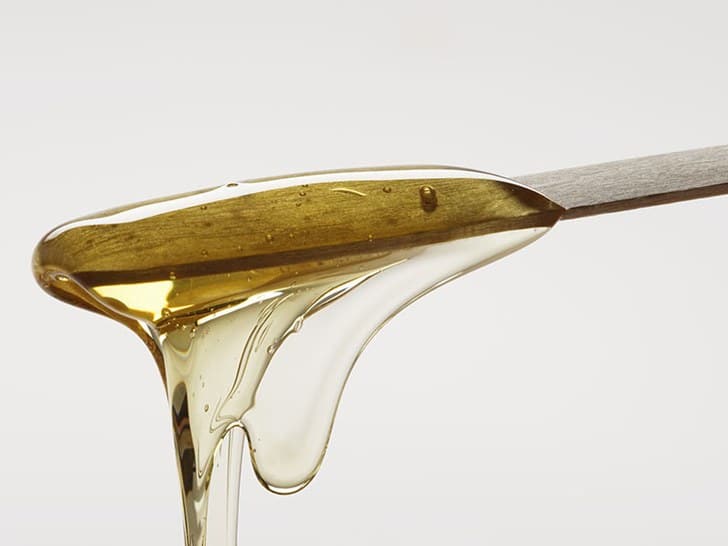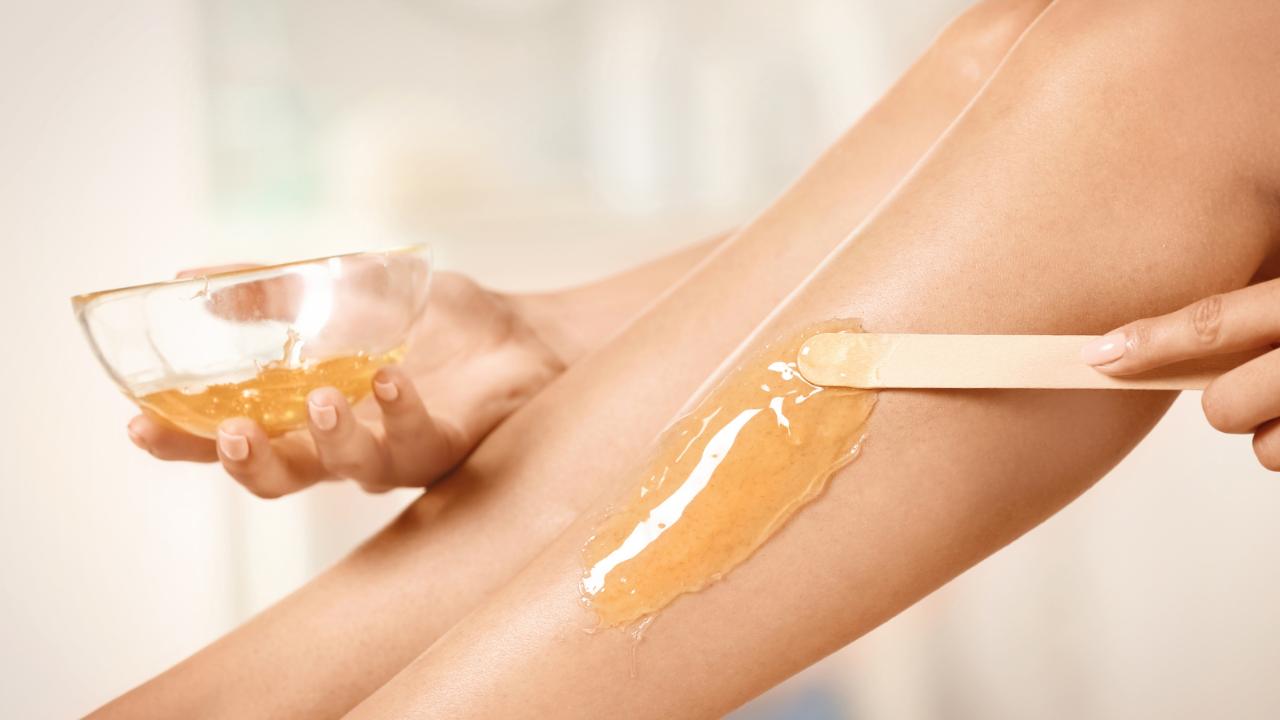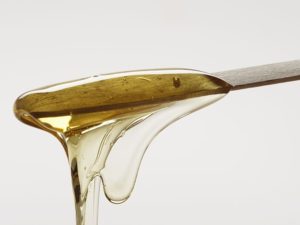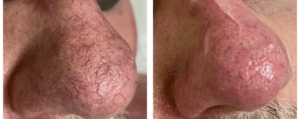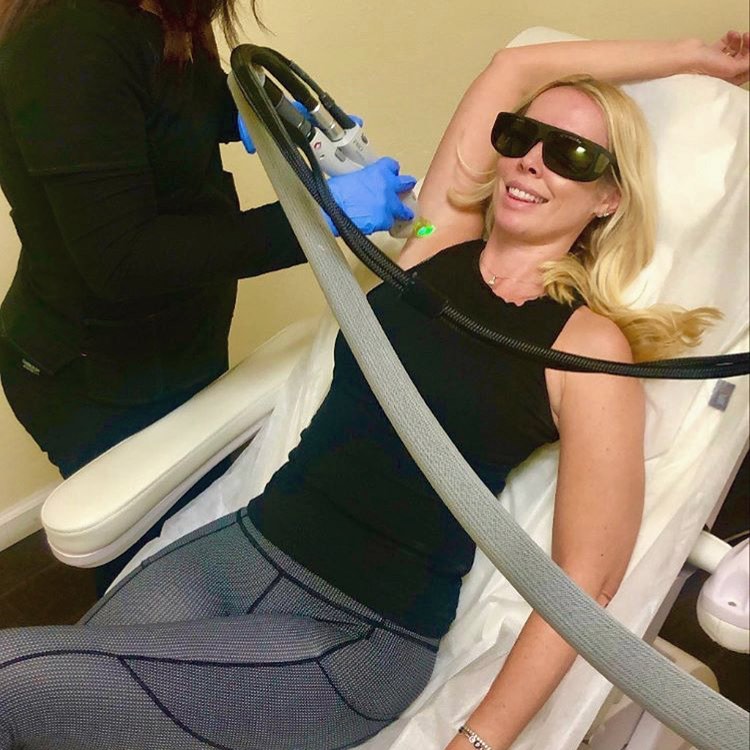Are you considering waxing after laser hair removal? If so, you may be wondering if it is a safe option. In this article, we will explore the safety of waxing after laser hair removal and provide you with the information you need to make an informed decision. At Spoiled Laser, your destination for beauty transformation, we understand the importance of feeling confident in your appearance. With our range of premium services, including laser hair removal, we strive to help you look and feel your best. Join us as we delve into the topic of waxing after laser hair removal and uncover the potential risks and benefits associated with this combined approach. So, let’s explore whether waxing after laser hair removal is indeed safe for you.
Understanding Laser Hair Removal
What is laser hair removal?
Laser hair removal is a cosmetic procedure that uses laser technology to remove unwanted hair from various parts of the body. It is a popular and effective method of long-term hair reduction, providing a semi-permanent solution to the problem of unwanted hair.
How does laser hair removal work?
During a laser hair removal session, a concentrated beam of light is directed onto the targeted area of the skin. The pigment in the hair follicles absorbs the light, which then damages the follicle, inhibiting future hair growth. The laser is designed to selectively target only the hair follicles, leaving the surrounding skin undamaged.
Benefits of laser hair removal
Laser hair removal offers several advantages over traditional hair removal methods. Firstly, it provides long-lasting results, significantly reducing the need for regular maintenance. It is also a relatively quick procedure, with each session typically lasting only a few minutes to an hour, depending on the size of the treated area. Laser hair removal is safe when performed by a trained professional and can target larger areas of the body, such as the legs or back, effectively. Furthermore, it can be used on various skin types and hair colors, making it an inclusive option for a wide range of individuals.
Recommended aftercare for laser hair removal
After undergoing laser hair removal, it is essential to follow proper aftercare instructions to optimize results and minimize potential side effects. This may include avoiding sun exposure, using sunscreen, avoiding excessive heat or friction on the treated area, and keeping the skin clean and moisturized. It is always best to consult with a professional to obtain personalized aftercare guidance tailored to your specific needs.
Get Your Free Consultation Today
What is Waxing?
Definition of waxing
Waxing is a hair removal technique that involves applying a layer of wax to the skin and then removing it along with the hair. It is a temporary method of hair removal that can provide smooth and hair-free skin for several weeks.
Types of waxing techniques
There are two main types of waxing techniques: hot waxing and strip waxing. Hot waxing involves applying a thick layer of heated wax directly to the skin, allowing it to cool and harden before being removed. Strip waxing, on the other hand, involves spreading a thin layer of wax onto the skin and then placing a cloth or paper strip over it. The strip is then quickly pulled off in the opposite direction of hair growth, removing the wax and hair in the process.
Advantages of waxing
Waxing offers several advantages as a hair removal method. It provides smooth and long-lasting results, with hair taking longer to regrow compared to shaving or other temporary methods. Additionally, regular waxing can lead to reduced hair density over time. Waxing can also exfoliate the skin, removing dead skin cells and leaving the skin feeling smoother and softer. Moreover, waxing can be performed on various parts of the body, including the face, arms, legs, bikini area, and back, making it a versatile option for many individuals.
Precautions to take before waxing
Before undergoing a waxing session, it is important to take certain precautions. Firstly, the hair should be at least a quarter-inch long to ensure effective removal. It is advisable to avoid tanning or sun exposure 24 to 48 hours before waxing to minimize skin sensitivity. Furthermore, individuals with certain skin conditions, such as sunburn, eczema, or open wounds, should avoid waxing until the skin has fully healed. Lastly, it is crucial to consult with a professional esthetician or dermatologist to determine if waxing is suitable for you and to address any concerns or specific considerations related to your skin type or medical history.
Combining Laser Hair Removal and Waxing
Can you wax after laser hair removal?
While laser hair removal provides long-term reduction in hair growth, it does not guarantee complete permanent hair removal. Therefore, some individuals may still have residual or fine hair in the treated areas. Waxing can be used as a complementary method to remove such hair after laser hair removal.
Why some people consider waxing after laser hair removal
There are several reasons why individuals may consider waxing after laser hair removal. Firstly, waxing can help remove any remaining or regrowth of finer hair that laser hair removal may have missed. Secondly, waxing can provide immediate results, as the hair is removed from the root, resulting in smoother skin. Additionally, some individuals may prefer the feeling or experience of waxing, as it can be less discomforting compared to laser hair removal.
Potential risks of waxing after laser hair removal
While waxing can be a convenient option for hair removal after laser treatment, it is essential to be aware of the potential risks involved. Waxing can cause skin irritation, redness, or even burns, especially in individuals with sensitive skin. Waxing can also interfere with the hair follicle destruction achieved by laser treatment, potentially reducing the effectiveness of laser hair removal. It is crucial to consult with a professional to assess the suitability and safety of waxing after laser hair removal, taking into consideration individual circumstances and skin sensitivities.
Importance of consulting with a professional
Before considering waxing after laser hair removal, it is highly recommended to consult with a professional esthetician or dermatologist. A trained expert can assess the condition of your skin, evaluate the effectiveness of your laser hair removal treatment, and determine if waxing would be safe and appropriate for you. They can also provide personalized advice and recommendations based on your individual circumstances, ensuring optimal results and minimizing any potential risks.
Understanding the Skin’s Healing Process
What happens to the skin after laser hair removal?
After laser hair removal, the treated skin may experience some temporary side effects. These can include redness, swelling, and mild discomfort, similar to a sunburn. In some cases, the skin may also develop small scabs or blisters, which typically heal on their own over time.
How long does the skin take to heal?
The skin’s healing process varies from person to person and depends on various factors, such as individual skin type and the size of the treated area. Generally, the initial side effects of laser hair removal subside within a few hours to a couple of days. The skin may take one to two weeks to fully recover, during which it is crucial to follow post-treatment care instructions and avoid irritants.
Factors that affect the skin’s healing process
Several factors can influence the skin’s healing process after laser hair removal. These include individual skin type, the intensity of the laser treatment, and the area of the body being treated. Additionally, proper aftercare, such as keeping the treated area clean, moisturized, and protected from excessive sun exposure, can contribute to faster healing and minimize the risk of complications.
Is waxing during the healing process safe?
It is generally recommended to avoid waxing during the healing process after laser hair removal. The skin may be sensitive and vulnerable during this time, and waxing can potentially cause further irritation or damage. It is crucial to allow the skin to fully heal before considering any further hair removal techniques. Consulting with a professional is important to determine the appropriate time for waxing after laser treatment based on individual healing progress and skin condition.
Effectiveness of Waxing After Laser Hair Removal
Can waxing remove hair that laser hair removal missed?
Waxing can be an effective method to remove any remaining or regrowth of finer hair that laser hair removal may have missed. As waxing removes hair from the root, it can provide immediate results and leave the skin feeling smooth and hair-free. However, it is important to note that the effectiveness of waxing after laser hair removal can vary depending on individual hair growth patterns and the success of the laser treatment.
Can waxing cause regrowth of treated hair?
Waxing alone does not cause regrowth of treated hair. However, if the hair follicles were not completely destroyed during laser hair removal, there is a possibility of regrowth in those areas. Waxing can help remove any fine or residual hair that may reappear after laser treatment.
Comparison of results between waxing and laser hair removal
Laser hair removal generally provides more substantial and long-term hair reduction compared to waxing. It targets the hair follicles directly and can achieve results that last for an extended period. On the other hand, waxing offers immediate hair removal but is a temporary solution, with hair regrowth typically occurring within a few weeks. The choice between the two methods depends on individual preferences, desired results, and long-term goals.
Optimal time frame between laser hair removal and waxing
The optimal time frame between laser hair removal and waxing can vary depending on individual hair growth patterns, the success of the laser treatment, and the specific recommendation of the professional performing the procedures. It is crucial to consult with a trained esthetician or dermatologist to determine the suitable time for waxing after laser hair removal, ensuring that the skin is sufficiently healed and the effectiveness of the laser treatment is not compromised.
Precautions and Risks of Waxing After Laser Hair Removal
Possible skin damage and irritation
Waxing after laser hair removal carries the risk of skin damage and irritation, particularly if the skin has not fully healed or is still sensitive from the laser treatment. The pulling motion involved in waxing can potentially cause redness, swelling, or even burns. It is essential to follow proper aftercare instructions, allow enough time for the skin to heal, and consult with a professional to assess the safety and suitability of waxing after laser treatment.
Increased sensitivity and discomfort
Waxing can temporarily increase skin sensitivity, especially when performed on skin that has recently undergone laser hair removal. Some individuals may experience heightened discomfort during the waxing process, and the skin may appear more red or irritated than usual. It is important to communicate any discomfort or concerns during the waxing session and ensure that the esthetician performing the procedure takes appropriate precautions.
Risk of ingrown hairs
Waxing, like any hair removal method, carries the risk of ingrown hairs. Ingrown hairs occur when the regrowing hair gets trapped beneath the skin’s surface, leading to inflammation and potential infection. Regular exfoliation and proper aftercare can help reduce the likelihood of ingrown hairs. However, it is crucial to discuss the risk of ingrown hairs with a professional and follow their recommendations for prevention and treatment.
Potential interference with hair follicle destruction by laser
Waxing can potentially interfere with the hair follicle destruction achieved by laser hair removal. The pulling motion involved in waxing can disrupt the damaged follicles and compromise the effectiveness of the laser treatment. While waxing can be used to remove any remaining or fine hair after laser hair removal, it is important to weigh the potential benefits against the risks and consult with a professional to determine the most appropriate course of action.
Consulting with a Professional
Why professional advice is necessary
Consulting with a professional esthetician or dermatologist is crucial when considering waxing after laser hair removal. They have the expertise to assess the condition of your skin, evaluate the effectiveness of the laser treatment, and provide personalized advice tailored to your specific needs. A professional can also address any concerns or potential risks associated with waxing after laser treatment, ensuring optimal results and minimizing the chance of complications.
Finding a reputable salon or spa
When seeking professional advice or undergoing waxing after laser hair removal, it is important to choose a reputable salon or spa. Look for establishments that have qualified and experienced staff, clean and hygienic facilities, and a track record of delivering quality services. Reading reviews, seeking recommendations, and conducting research can help in finding a reliable and trustworthy establishment.
Discussing your concerns and goals
During your consultation with a professional, it is vital to openly discuss your concerns and goals. They can provide the necessary information, answer any questions you may have, and address any apprehensions or specific circumstances related to waxing after laser hair removal. Clear communication will ensure that both you and the professional have a thorough understanding of your expectations and can work together to achieve the desired results.
Customized approach for individual circumstances
Every individual is unique, and their skin may respond differently to laser hair removal and waxing. A professional can customize the approach based on your individual circumstances, ensuring that any recommendation or advice is tailored to your specific needs. By considering your skin type, hair growth pattern, medical history, and preferences, a professional can provide a comprehensive and personalized treatment plan, maximizing safety and efficacy.
Alternative Hair Removal Methods
Other hair removal methods to consider
In addition to laser hair removal and waxing, there are several other hair removal methods available. These include shaving, depilatory creams, epilation, and electrolysis. Each method has its pros and cons, and the choice depends on individual preferences, pain tolerance, desired results, and long-term objectives.
Pros and cons of alternative methods
Shaving is a quick and inexpensive method, but it provides only short-term results. Depilatory creams dissolve the hair at the surface but can cause skin irritation or allergies. Epilation removes hair from the root and can provide longer-lasting results, but it can be painful for some individuals. Electrolysis is a permanent hair removal method that works by damaging the hair follicle with an electric current. However, it can be time-consuming and may require multiple sessions.
Comparing results and safety with waxing
When comparing the results and safety of alternative hair removal methods with waxing, it is important to consider individual preferences and goals. Waxing offers immediate and relatively long-lasting results, with hair regrowth typically occurring within a few weeks. It is a safe and effective method, provided it is performed by a trained professional and proper aftercare is followed. Ultimately, the decision of which method to choose depends on personal considerations and the desired balance between convenience, effectiveness, and longevity.
Long-term hair removal options
For individuals seeking more long-term or permanent hair removal, options such as electrolysis or laser hair removal may be more suitable. Electrolysis is a method that involves targeting each hair follicle individually with an electric current to destroy it. This can result in permanent hair removal but may require multiple sessions over an extended period. Laser hair removal, as discussed earlier, provides long-term hair reduction and is a popular choice for many individuals seeking semi-permanent solutions.
Personal Considerations and Preferences
Importance of personal choice
When it comes to hair removal, personal choice plays a significant role. Each individual has their own preferences and comfort levels. It is important to consider what feels right for you and what aligns with your personal goals and values. Hair removal methods should not be dictated solely by societal norms but rather by what makes you feel confident and comfortable in your own skin.
Factors to consider when making a decision
Several factors should be taken into account when making a decision about hair removal methods. These include the desired longevity of results, pain tolerance, budget, convenience, skin sensitivity, and previous experiences. It is worth considering the pros and cons of each method, consulting with professionals, and conducting thorough research to make an informed decision that suits your individual needs.
Preferences and individual experiences
Preferences and individual experiences can greatly influence the choice of hair removal method. Some individuals may prefer the immediate and temporary results of waxing, while others may prioritize the reduced hair growth and long-lasting effects of laser hair removal. Personal experiences also play a role, as some individuals may have had positive or negative encounters with specific methods that shape their preferences. It is important to respect and prioritize individual experiences when making decisions regarding hair removal.
Finding the right balance between convenience and effectiveness
Finding the right balance between convenience and effectiveness is key when selecting a hair removal method. It is important to consider the time and effort involved in each method, the desired longevity of results, and any potential risks or side effects. Some individuals may prioritize convenience and opt for quick and temporary methods such as shaving or depilatory creams. On the other hand, others may prioritize effectiveness and invest in semi-permanent or permanent solutions like laser hair removal or electrolysis.
Conclusion
Understanding the intricacies of hair removal methods, such as laser hair removal and waxing, is essential for making informed decisions. While laser hair removal offers long-term hair reduction, waxing can be considered as a complementary method for removing any remaining or fine hair. However, it is important to consult with a professional and consider potential risks and precautions associated with waxing after laser treatment.
The skin’s healing process after laser hair removal requires time and proper aftercare, making it crucial to avoid waxing during this period. Waxing can provide immediate results but is a temporary solution compared to laser hair removal. Individual factors and preferences play a significant role in choosing the most suitable hair removal method, and professional advice can help in navigating through the multitude of options available.
In conclusion, it is essential to conduct personal research, seek professional advice, and prioritize individual needs when making decisions about hair removal. By understanding the benefits, risks, and compatibility of different methods, individuals can make informed choices that align with their desired results and overall well-being.

